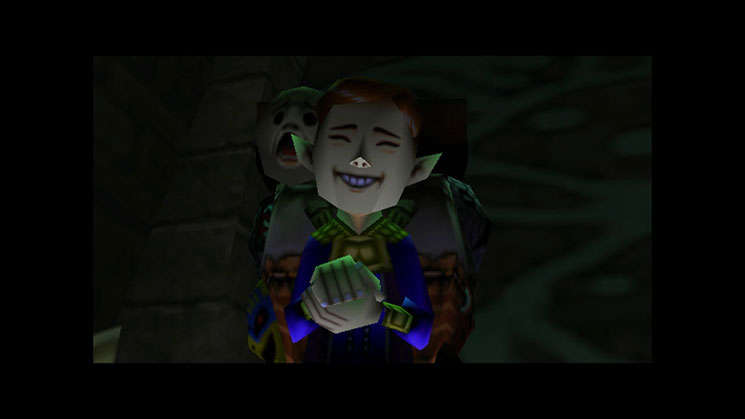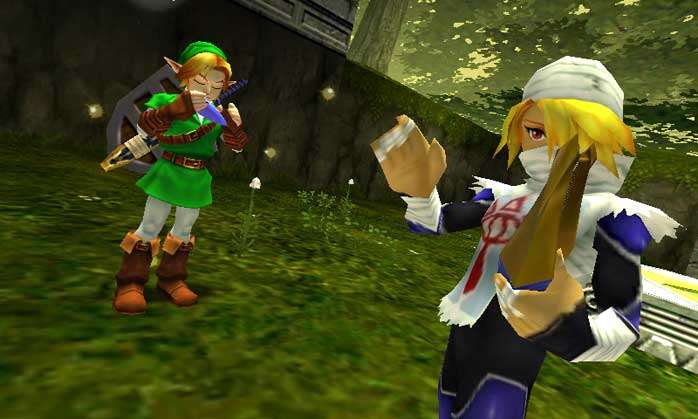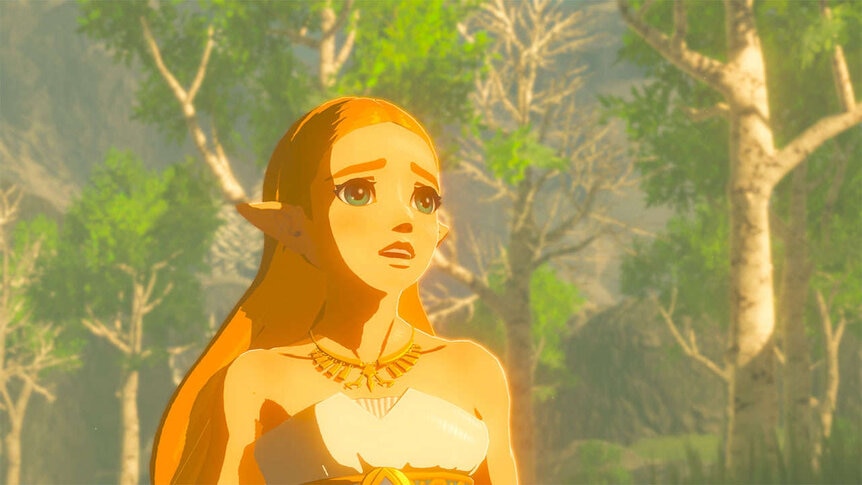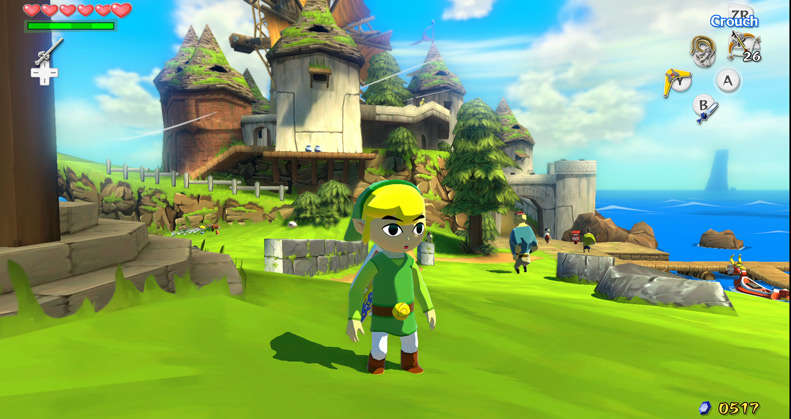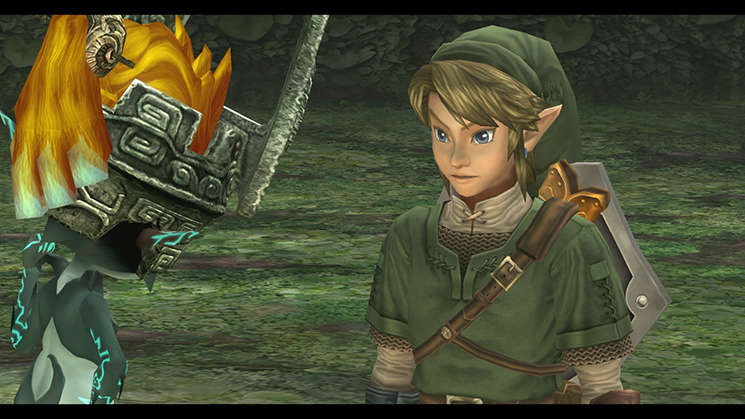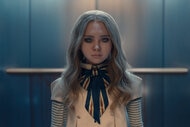Create a free profile to get unlimited access to exclusive videos, sweepstakes, and more!
The Ranking of Zelda: A deep dive into Link’s top 5 all-time greatest adventures
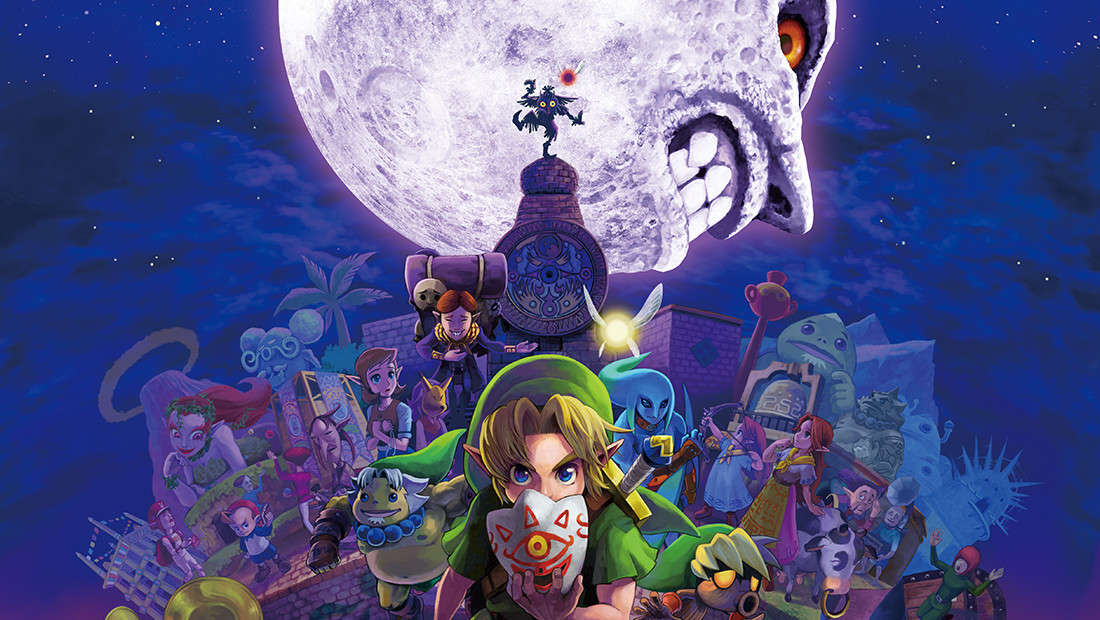
Legend of Zelda fans are getting a fresh dose of Nintendo-sanctioned story lore now that Hyrule Warriors: Age of Calamity is finally out in the wild. Though the new hack-and-slash from developer Omega Force and publisher Koei Tecmo isn’t officially a full-scale main entry in the Zelda franchise along the lines of Ocarina of Time or Breath of the Wild, it’s still a fully-realized Zelda story — complete with characters, history, and newly-introduced events that now sit squarely within the increasingly fascinating and complex “official” Zelda canon.
We’ve been playing through Age of Calamity since its Nov. 20 release, and while it’s a blast to see Breath of the Wild NPCs like the swashbuckling Revali or the reflective Mipha step into the spotlight, the narrowed-down focus on field-clearing mob fights is also a reminder that we’re definitely still in between proper mainline Zelda games. For sure, Age of Calamity gives a surprisingly generous nod toward the main games’ specialty cocktail of endless action-adventuring, tucked-away secrets, puzzle dungeons, and epic story moments — but at the end of the day, it feels exactly like what it is: a supplement to its big-name, system-selling Zelda siblings.
One "problem" with a franchise like The Legend of Zelda is its doggone consistency. From age to age and platform to platform, misses among the major mainline Zelda games have been rare, as the pantheon of Zelda greats grows with each new title. The original The Legend of Zelda for the NES still holds up as a top-down scrolling adventure, while Wind Waker’s open-ocean exploration and timeless cel animation still makes it a fresh-looking game, no matter the decade. The list goes on... but if you’ve played more than one Zelda title (and you probably have), you get the idea.
Anyone who’s interested in playing their way through the Zelda gaming canon will have plenty of challenges tracking down which older games can still be found to run on more recent hardware, to say nothing of deciding where to start. Sure, you could just dial up the original 1986 game for the NES and go in chronological order, but if you want to cut straight to the best of the best, there’s probably a better way.
In short, when it comes to navigating the sprawling timeline of the main Zelda games, it’s dangerous to go alone! That’s why we’ve compiled our very own curated countdown of the top five titles from Link’s 35-year history (though we’d swear he doesn’t look a day over 17). And remember: this is just one take. Every time we talk about the best Zelda games, it seems, the finishing order is bound to shift slightly — that's how good they are. Picking the top Zelda title is a Sophie’s Choice of deciding against a handful of other more or less equally-great games, and at the end of the day, you have to follow your heart as much as your mind.
See how our top-five list compares with your own, as we wait for the hugely hyped sequel to Breath of the Wild to hit the Switch — and no doubt create a new ripple in our Zelda rankings.
Note: With one present-day exception, all of these games have yet to be ported over to the Switch, which is currently the only console Nintendo has in active production. If you still own the discontinued 3DS handheld or the previous-gen Wii U console, though, you can still snag the most recently-updated digital copies through the Nintendo website. The 3DS and Wii U trailers below reflect Nintendo's latest version of each game.
1. The Legend of Zelda: Majora's Mask
The top three or four are always brutally tough to call, but this is the Zelda game we’d be happiest to be stuck with if we were stranded on a desert island. And Majora’s Mask can’t help that it inherited a wealth of perfection, as a starting point, from its iconic predecessor. Releasing in 2000 on the heels of Ocarina of Time — still (and probably forever) in the conversation surrounding the greatest games ever made — The Legend of Zelda: Majora’s Mask came freighted with a falling Moon’s worth of expectations… and boy, did it exceed them all.
There’s pretty much no gameplay aspect that Majora’s Mask didn’t nail. Rolling around as a Goron in the open-world Termina field was a romp all its own, but that huge, interconnected world outside Clock Town also made for a thematic hub stocked with tons of things to do — with everything leading to the places you’d inevitably need to go to advance the game anyway. The dungeon puzzles, insanely creative boss fights, and just the sheer joy of figuring everything out were a cut above even what Ocarina of Time already had innovated, and the dungeons ended up being the kind of places that held secrets beyond just your one-time trip to the big bad guy at the end.
That doesn’t even begin to factor in the time element that allowed Majora’s Mask to reveal itself through iteration. It’s well known by now, but Link couldn’t beat Termina’s three-day countdown to meteoric Moon destruction all in one go. Playing the Song of Time on his trusty ocarina could repeatedly reset the countdown timer back to 6 a.m. of the first day, in the process preserving some permanent gains (like collected masks or fully-resolved side quests), while serving up enough of a penalty (like losing all your wallet rupees and minor items) to make going back in time a strategic choice.
Some of the biggest delights in Majora’s Mask come from the game’s genius manipulation of time and other ocarina-affected elements, including the deep and arching storyline about repairing two lovers’ missed connection, finishing the Bombers’ notebook full of side tasks (nearly an entire game in itself), and — in what’s probably the most poignant moment in any Zelda game — reuniting a father and daughter after their heartbreaking (and ghastly) separation.
With 24 masks, tons of weapons and items that served up engaging upgrade paths, and addictive and challenging mini-games (remember the alien cow abductions?), there’s almost no limit to the number of hours we could spend roaming around in Nintendo’s alternate-reality answer to Hyrule. Of all the Zelda games we’d love to see Nintendo bring to the Switch, Majora’s Mask sits at the very tip-top of the list. Twenty years on from its release, it’s a post-Ocarina classic that earned Nintendo a ton of goodwill with fans, revealing the Big N to be both willing and able to innovate — and improve on — perfection.
2. The Legend of Zelda: Ocarina of Time
As Navi would say — Listen! There is no Majora’s Mask without Ocarina of Time. In fact, there’s no 3D console gaming as we know it without Ocarina of Time. Games like Breath of the Wild may have revolutionized the Zelda franchise, but The Legend of Zelda: Ocarina of Time, like its console cousin Super Mario 64, actually helped revolutionize gaming itself.
Every time you lock onto a targeted enemy in any console action game, you’re repeating a gameplay device that Ocarina of Time, with its Z-targeting mechanic, first pioneered. While early Ocarina players spoiled by what Mario could do on the N64 took a minute to warm to the lack of a jump button for Link, Nintendo’s innovation of a context-sensitive use for the main controller button soon became so apparent that it’s still used widely in action, action-RPG, first-person shooters, and pretty much any type of game where exploration and discovery plays a big role. OoT also did more than any game to date to evolve the idea that, if you could see some enticing landmark in the open-world distance, you could probably go and explore it. Oh, and it made riding on a horse feel like freedom… not a chore.
If it weren’t for Majora’s Mask, OoT would also be vying with Twilight Princess for the enviable title of sporting the very best 3D dungeons in the Zelda franchise. No console player had yet experienced the kind of elaborate 3D environmental puzzles that awaited when Ocarina came out in 1998. Even today, few adventure games manage the near-impossible trick of making those puzzles feel vital to the mood of the dungeon itself. When Link figures out how to set sail on a ghost ship in the Shadow Temple, illuminate the answers to puzzles with his mirror shield in the Spirit Temple, or twist the funhouse corridor in the Forest Temple, it feels like you’re an invested participant in the moody and highly specific feeling that each dungeon created. The things you do in these dungeons feel like natural, reasonable responses to the kind of places you’ve wandered into.
And man, were these dungeons some moody places. From the very first game, Zelda adventures had always alluded to something numinous and sinister lurking just beneath the surface of what you could see. But Ocarina of Time teased that feeling out in explicit ways. Blood stains the stone floor of a forsaken torture room in the Shadow Temple. The Forest Temple chirps with a near-maddening disembodied vocal refrain that feels tailor-made to put you ill at ease. The boss fight against Twinrova in the Spirit Temple is an epic, earth-scorching conflagration that seems to almost melt the Nintendo 64’s limited technical capabilities. And revisiting Castle Town in its decrepit, haunted, and dangerous state as Adult Link hits hard, placing you amid the cursed ruins of a great ancient civilization you once knew… another life ago.
Then there was the endgame. Some Zelda games have been criticized for the way they serve up their final bosses, or (like Breath of the Wild) the way they let Link find his way to them. But in a stone-cold epic decision that pretty much reset what fans would come to expect from final fights, Nintendo made the path to Ganondorf an integral part of the game that, it turned out, had been shadowing every story beat along the way. Intrepidly stalking into Ganon’s Castle was a wary walk down memory lane that evoked every moment of Link’s growth throughout Ocarina of Time — both as a child leaving Kokiri Forest, and as his 7-year-older self. And it did it all while raising the game’s sinister mood to its highest pitch, with every step up that doomed final staircase telepathing that something truly wicked lay in wait at the end. Dispatching Ganondorf, only to earn your way into the final showdown with the massive, piglike Ganon offered an immensely satisfying payoff that amounted to stopping an agent of true evil — and then staring the very source of that evil right in the face.
If Majora’s Mask turned the ocarina into a trusty time-spinning tool that hung by Link’s belt like a faithful pocket knife, Ocarina of Time is the game that debuted the little hand flute as a big-moment device; one whose every use felt like a major event that shook up the Hyrule timeline beyond just the confines of the game you were playing. Time is vital to just about every Zelda experience, and Ocarina of Time is the game that forever cemented the idea that Hyrule, as well as Link and Zelda’s intertwined fates within it, is meant to exist as an idea as much as a serviceable game world. We only wish Nintendo would go ahead and fast-forward to a time when The Legend of Zelda: Ocarina of Time — easily one of the very best video games you’ll ever play — will be playable on its current-gen hardware.
3. The Legend of Zelda: Breath of the Wild
You knew this one couldn’t be far from the top spot. Nintendo reimagined what a Zelda game could be from the ground up for its hybrid console, opening everything to the player’s go-anywhere whim while cleverly funneling The Legend of Zelda: Breath of the Wild’s plot beats into key set pieces and narrative moments that assured you’d always know where you were in the story.
Trading previous games’ conventional dungeons for a quartet of Divine Beast challenges and more than 100 mini-puzzler Shrines scattered throughout the massive map, Breath of the Wild shook up the structure of Zelda games by allowing you to head almost straight for the main challenge (if you dared), while placing Link in a world so inviting, so vast, and so filled with visually-cued possibilities for exploration that it was easy to lose yourself down a deep rabbit hole of diversions without ever thinking all that much about the larger goal. Making good on the original NES Zelda’s invitation to just start wandering and see what happens, BOTW marked a return to the very first game’s premise that curious players will forge their own paths to the finish line, in the process losing themselves in the journey.
And the journey is really where Breath of the Wild shines. If Ocarina of Time introduced the idea that you could explore every distant landmark you see, BOTW took that concept and cranked it past 11, packing its enormous map of Hyrule with an amazing density of sights that were meant to be visited. Finding the right panoramic vantage could even allow Link to spy the map’s biggest features from nearly the opposite end of the world — and yet the world itself was so fully realized, down in the Faron Woods or amid the winding groves near Lake Hylia — that you could enjoy hours of literally not being able to see the larger forest for the trees. When you finally did make it to Death Mountain or the highest peaks of Akkala, the granular details of what you found there meant losing yourself in unique micro-environments and mini-worlds that each could take days to explore.
One of the marvels of playing Breath of the Wild is to put the controller down — perhaps after a tough Lynel fight — and just pause to appreciate how the game is keeping track of the rest of Hyrule in the background. Day turns to night, Guardian Stalkers roam the distant plains, the windmill keeps spinning over the Ancient Tech Lab, and somewhere in the skies, the four dragons bob through their prescribed paths. Breath of the Wild is Nintendo’s biggest technical accomplishment in the Zelda series, and it’s not even close. Sporting an open world larger than Bethesda’s Skyrim, it’s not just an exercise in outsized vastness, it's also a remarkable balancing act between a greater number of complex gameplay systems than any other Zelda game to date. From the Divine Beasts’ laser-like beams vigilantly pointing the way to Hyrule Castle, to a bonkers Korok seed side quest, to a new scarcity system that kept Link continually crafting and cooking just to stay alive, BOTW juggled hundreds of moving parts behind the scenes, and it did it effortlessly.
Link gets a paraglider early in the game, and there’s no way to leave the Great Plateau and enter the rest of Hyrule without it. It’s one of the few unavoidably scripted moments standing between you and the endgame showdown with Calamity Ganon, and we think there’s a reason it’s one of the very first linear and unskippable encounters you face. When Link leaps off that first tower and sets sail, the spirited sense of adventure and endless possibility that the game’s title teases… just clicks. The Legend of Zelda: Breath of the Wild doesn’t have the most dungeons or the deepest story of the Zelda games, but there’s an excited and, yes, wild optimism in the way it captures the spirit of taking that first step on a long and mysterious journey. It’s an open-ended adventure that begs and then rewards players for following their instincts for wanderlust — and it’s an experience we’ll return to again and again and again.
4. The Legend of Zelda: The Wind Waker
Breath of the Wild wasn’t the first time Nintendo parted ways with a tried-and-true formula to take its console Zelda games in a completely new direction. The Legend of Zelda: The Wind Waker set sail with a cute, cartoonish young Link in open water, putting you atop a vast ocean of exploration with an adorable and ageless cel-shaded art style that looked great on the GameCube — Wind Waker’s home platform — and will still look great on future-gen hardware 20 years from now.
The visual and environmental overhaul came with an attendant overhaul of Link’s immediate place in the Hyrule-verse. Wind Waker was the successor to Ocarina of Time and Majora’s Mask, a pair of games that did more than anything since A Link to the Past (or maybe the original Zelda) to sharply define what a Zelda game was supposed to be. Rather than evolve those expectations with a GameCube-enhanced version of teenage Link, Wind Waker shrank our hero down to a plucky, diminutive kid who was nearly always the smallest occupant of a very, very big world.
Despite its free-sailing traversal, Wind Waker’s open-world could frustrate players’ sense of adventure. Thanks to a linear series of gatekeeping power-ups and story checkpoints, Link often found himself sailing to far-flung locations before he was truly ready and able to experience them. It’s an open-world design oversight that Nintendo got right with Breath of the Wild, and it’s Wind Waker’s chief shortcoming — one that the game’s surprisingly mature story, delightful presentation, and clever dungeons thankfully overshadow. That inert island it took you several minutes to get to might’ve had nothing to offer early in the game, but every nook and cranny on the huge game map’s 7x7 grid eventually did come to life… once players understood Nintendo’s design choices.
Link may have looked cute in Wind Waker, but he wasn’t a helpless little kid. One of Nintendo mastermind Shigeru Miyamoto’s most clever creative tricks has always been putting pint-sized adventurers in positions of intrepid power, and Wind Waker’s endearing art style — with lil’ Link at the center of the story — drives home what an effective device that really is. When Link meets the talking sailboat who’ll end up serving as the game’s main exploration vessel, the King of Red Lions, he isn’t scared of this regal mythic beast of a creature; he’s just astonished and curious. And every time he sets foot on board, to sail into the blue horizon to chart unexplored waters, the brave, determined look on Link’s face is the look of inquisitive optimism — not fear.
For a game that looked and played like an interactive cartoon, Wind Waker’s story was surprisingly mature, and it helped evolve fans’ ever-growing fascination with the three perennial characters’ intertwining roles in the sweeping Zelda timeline. More than in most other Zelda games, Link’s growth from clueless innocence to taking up his rightful mantle as the Hero of Time felt like a hand-in-hand journey that included the player in the real-time sense of unfolding discovery. And it gave us a new appreciation of just how evil and murderous Ganondorf — even after all we’d seen of him in Ocarina of Time — had always been. The final boss battle does one of the series’ very best jobs of assembling all three of the Triforce wielders — Link, Zelda, and Ganondorf — onto the same dramatic stage, and it gave Zelda a satisfying piece of the fighting action, a welcome inclusion we’d love to see revisited in future mainline Zelda titles. We’d also love to revisit it on Nintendo’s current console, because the distinctive visual style that The Legend of Zelda: The Wind Waker carved out in the Zelda-verse looks just as terrific in 2020 as it did when the game first debuted all the way back in 2002.
5. The Legend of Zelda: Twilight Princess
The Legend of Zelda: Twilight Princess isn’t a revolutionary game — it’s just the Zelda game that got everything right. Coming at the start of the Wii’s life cycle and releasing for both the Wii and the GameCube, Twilight Princess reverted to the visual presentation most fans thought Zelda sensei Eiji Aonuma was tracking toward all along with Ocarina of Time and Majora’s Mask… until Wind Waker interrupted the process with its welcome — but definitely different — cel-shaded style.
Nearly everything about Twilight Princess looks and feels like the evolution of the Zelda visual canon that Nintendo hatched with Ocarina of Time. Hyrule Field looks as photorealistic as Nintendo’s hardware could render it in 2006; Castle Town feels like an NPC-populated city worthy of the latest and greatest RPGs, and getting the Master Sword follows a progression path that mimics the mid-story reward structure that Ocarina of Time cemented so firmly in fans’ hearts as an “aha!” moment that every Zelda game should include. There’s no young Link here, no cute Link with anime-wide eyes, just a teenaged hero-in-waiting whose transformative powers don’t mess with the fourth dimension… only the animal dimension, in the hyper-sensitive, clue-scouting form of the shapeshifting Wolf Link.
But Twilight Princess wasn’t just the mere product of Nintendo going back through the Zelda-verse to check off every expected trope. It was an extremely well-curated game (despite its sprawling size), an experience in which every well-placed boulder, every rivulet and stream, and every rooftop, shed, or cellar all contained some secret worth exploring. Unlike Breath of the Wild, which often rewards you simply with the act of exploration itself, most of the scrounging and seeking in Twilight Princess fed directly into some established quest or story arc that the game made clear early on. There were luminous Golden Bugs to collect, Poes to capture, Howling Stones to help human Link power up his sword skills, and some of the Zelda series’ most satisfying mini-games.
Twilight Princess really shines brightest in two places: with Link’s sidekick, and in the dungeons. Link gets saddled with an impish, and perhaps even treacherous little goblin named Midna early on, and for the game’s entire duration, she’s a quick button press away — cajoling, mocking, selfishly manipulating, and, when it suits her, maybe even helping. Midna serves as Link’s bridge between the real world and the Twilight world, as well as between Link’s human and wolf forms. The longer she sticks around, the clearer it becomes that she’s not just a serviceable, Navi-like context helper, but something much more crucial in Twilight Princess’ unfolding story. Midna’s brittle personality starts to get under your skin — just a little at first, and then a lot — and by the time a series of late-game events finally puts her in harm’s way, you find yourself panicking at the thought of having to carry on without her. Midna earns every dramatic second of her brightest moment in the spotlight, with the postgame reveal of her true identity ranking as one of the Zelda series’ all-time biggest jaw-drops.
It’s a good thing Midna’s there to help, because Zelda dungeons get no better, nor more creative, than the elaborate ones players encountered in Twilight Princess. Nintendo has always had a gift for making the approach to the series’ dungeon entrances play out like mini-dungeon quests before the main event, but nowhere is that on greater display than here. Link endured puzzles and dangers of all kinds just to reach the gates of the game’s biggest challenges, schlepping through boggy perils to reach the Forest Temple, clambering his way through hostile territory to win entry to the Goron Mines, snowboarding his way to the Snowpeak Ruins, or performing all kinds of Hyrule-spanning tasks just to earn the right to be shot out of a cannon and into the City in the Sky.
Once he’d finally made it inside, though, the real fun began. With new tools like the Spinner (a slot-zooming device that Link can ride anywhere there’s an environmental spot for it) and the Dominion Rod (a wand that lets Link move and guide statues), dungeon puzzles in this game forced players to use their mind as much as their eyes. More than that, they were just plain fun. It’s a blast to go chandelier-hopping in a giant Yeti’s house or hook-shotting your way to the top of a bottomless barrel-shaped chasm. But nothing in all of Zelda gaming history feels quite like stomping around upside-down on the magnetized, crystal-blue pathways in the Goron Mines in a sturdy pair of Iron Boots (just be careful not to accidentally take them off)!
Like all the games on this list not named Breath of the Wild, Twilight Princess is sorely missed as a current-gen option for the Switch. Here’s hoping that Nintendo delves deep into its vault and comes up with the Hyrule history lesson we’re all craving — one that puts some of Link’s greatest and most epic 3D gaming adventures back in front of a new generation of players, while giving longtime fans a welcome walk down memory lane.
